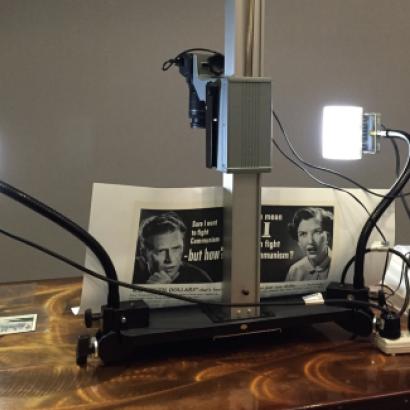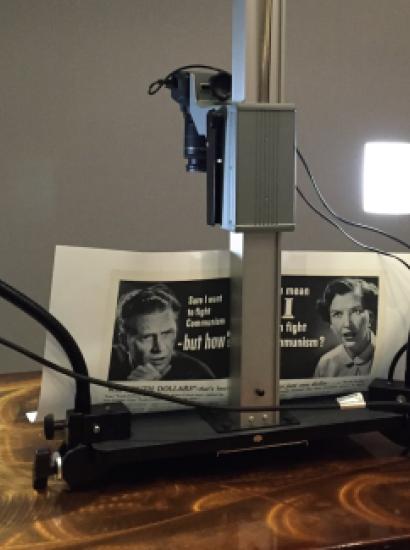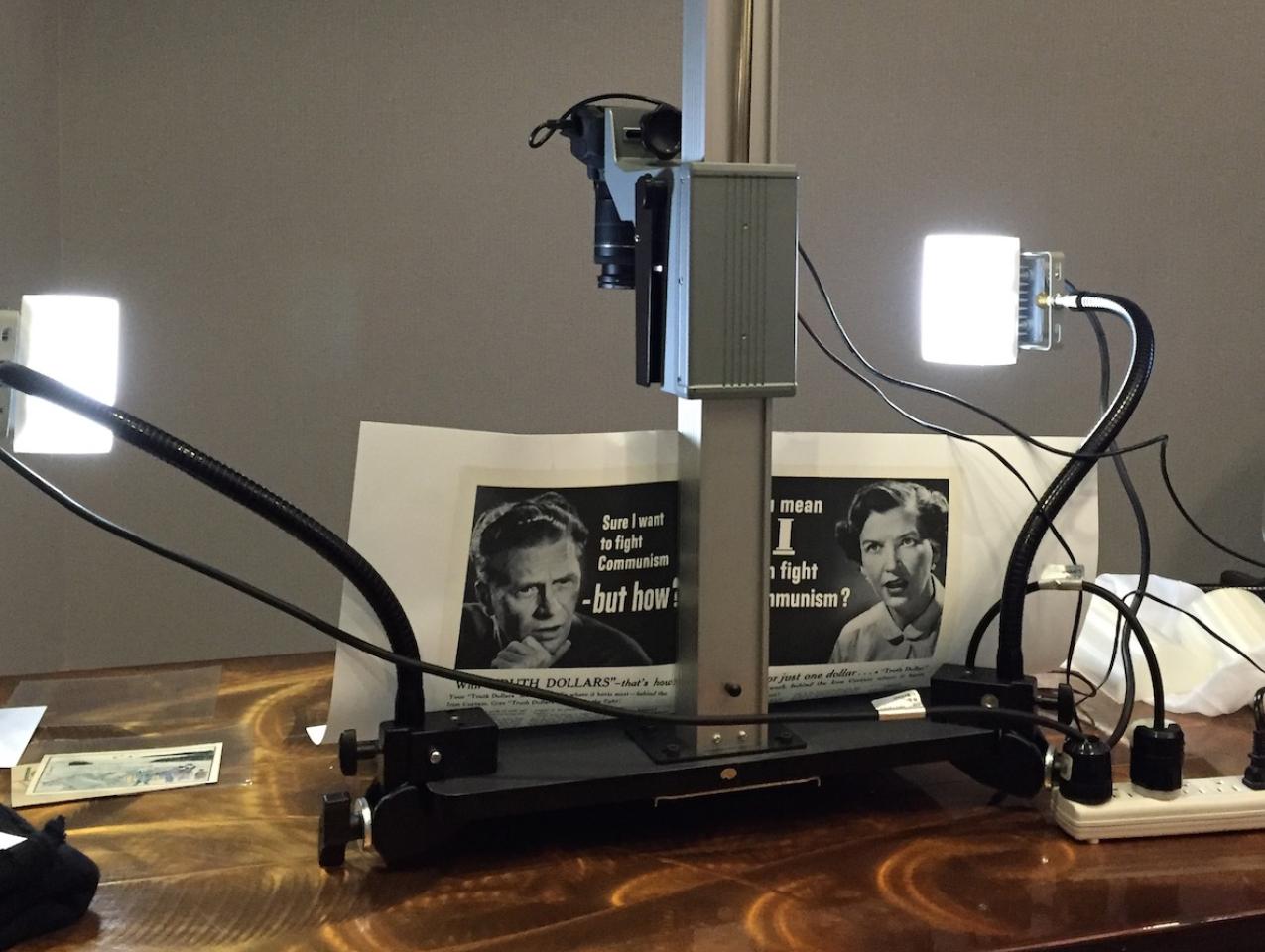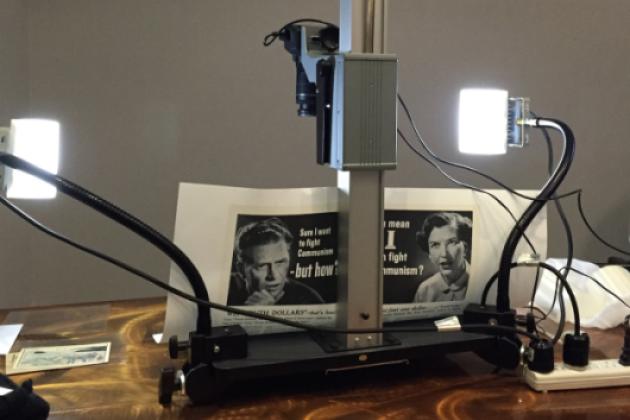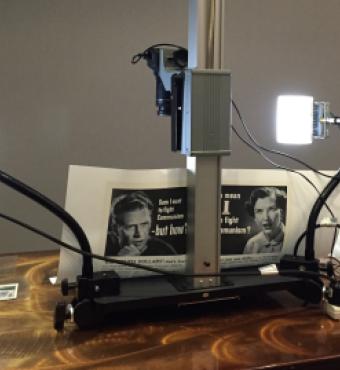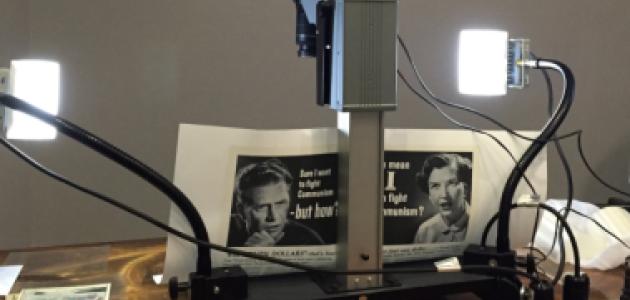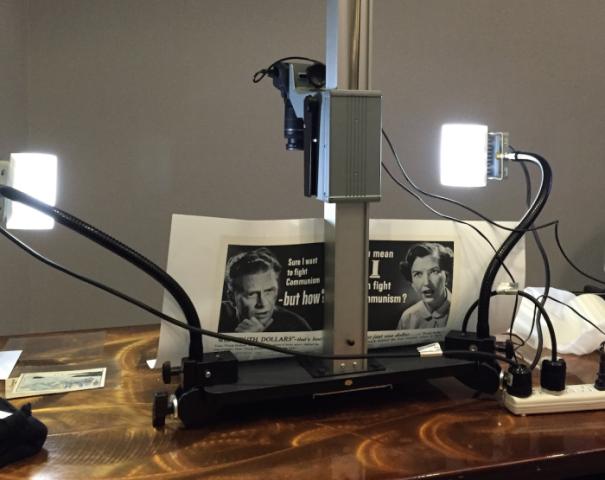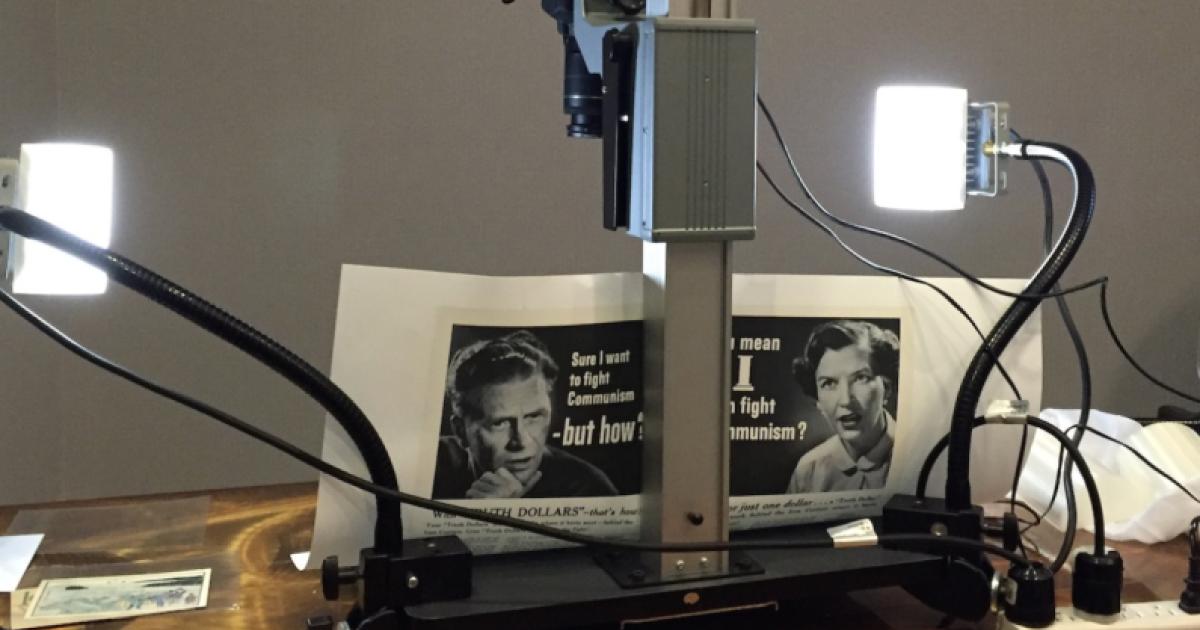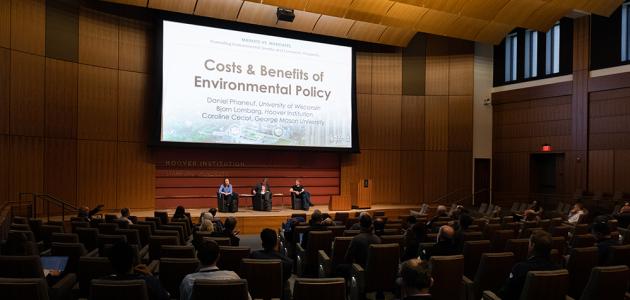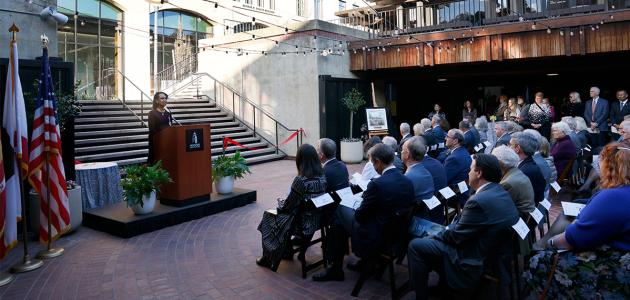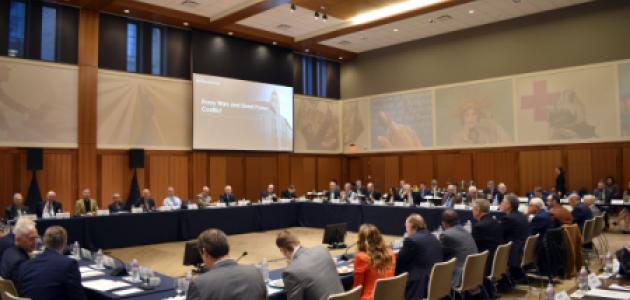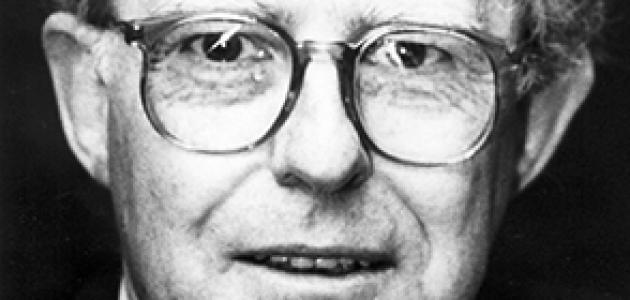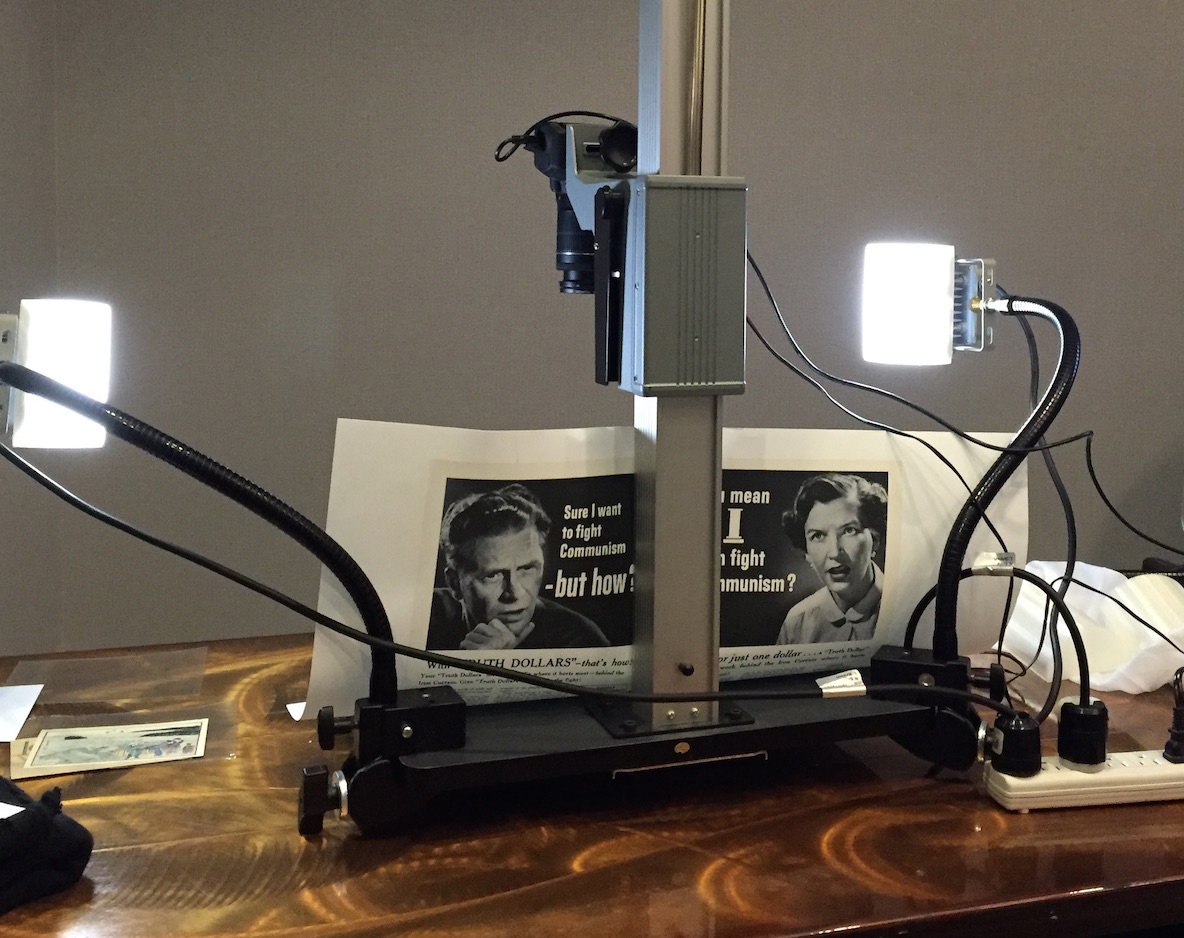
On April 9th, Hoover Library & Archives imaging specialists delivered a presentation entitled “Democratizing Digitization” at the annual meeting of the Society of California Archivists held in Santa Rosa, California. Russell Rader, Digital Materials Manager, and Daniel Jarvis, Digitization Production Supervisor, provided fellow archivists from California institutions an overview of Hoover’s recent efforts to build a low-budget quick capture station: a copy stand system composed of consumer grade products and developed in-house as a high-output, low-cost alternative to traditional digitization systems. Rader and Jarvis also explained the use of the capture station in the large-scale project of digitizing mug shots and surveillance photos from the collection of the Okhrana, the Russian Imperial secret police. The Okhrana collection was the focus of Hoover’s most recent exhibition, Double Exposure: Russia’s Secret Police Under the Last Tsars.
Exhibiting the physical copy stand build by Hoover’s digitization team, Rader outlined the ambitious experiments that staff members undertook to solve problems related to light, scale, and ergonomics while building the scanning station. Drawing frequent chuckles from the crowd, Rader explained that his team had tinkered with a wide array of materials—including cutting boards, plant stands, latex gloves, bendable lamps, and scotch tape—before finding a combination of materials that would provide the right light and layout for successful scanning. Inspired by the democratic DIY approach to technology, staff members at Hoover were able to create the means for quality digitization at a low cost, leaving the remaining technology budget open for other projects.
Following Rader’s explanation of the creative engineering of the copy stand, Daniel Jarvis explained the workflow and file management of the Okhrana records held at Hoover. In preparation for Double Exposure, the digitization lab launched a preservation effort that resulted in the capturing of 9895 images of 136 individuals, photographed at approximately 35 seconds per image. Jarvis explained the treatment of issues of quality control, avoiding digital hypnosis caused by repetitive scanning, file management, and the vast benefit of such large-scale digitization projects for researchers.




